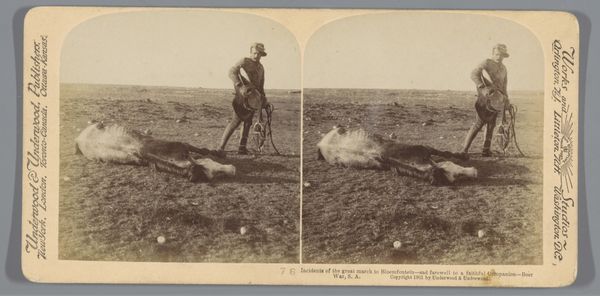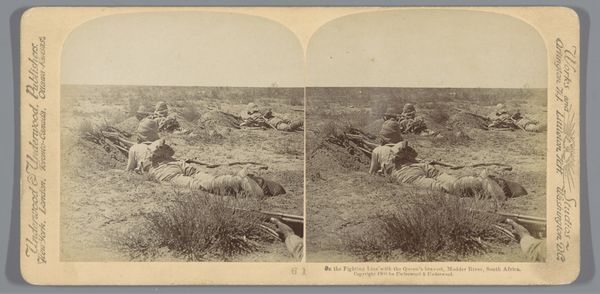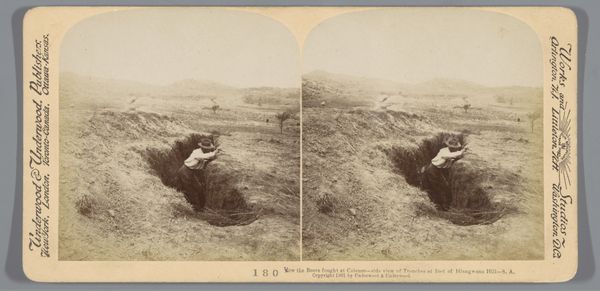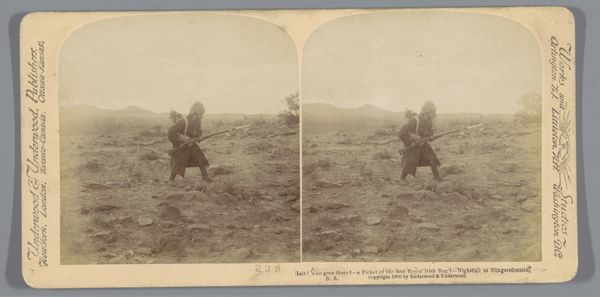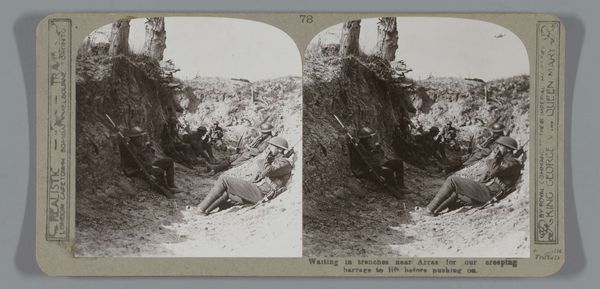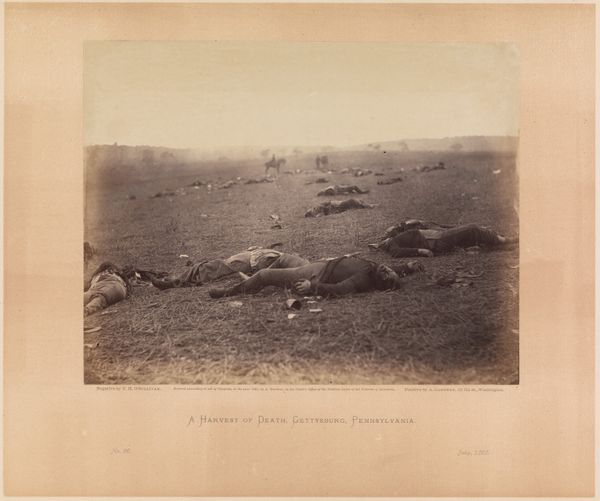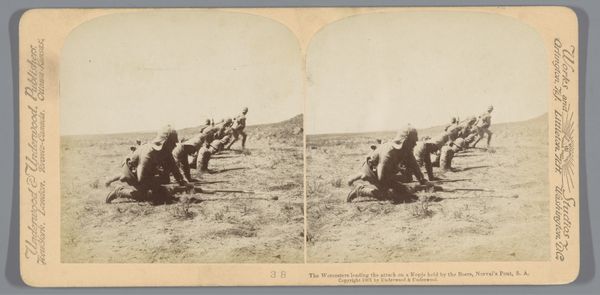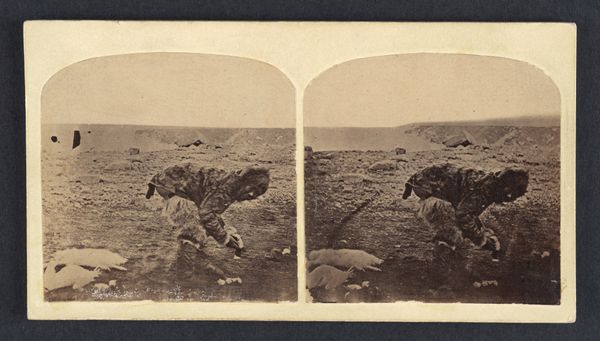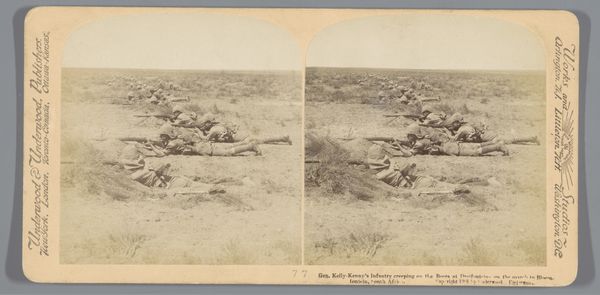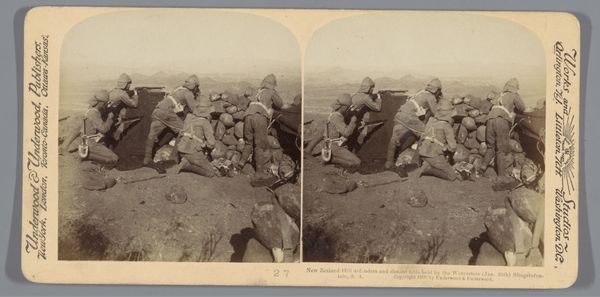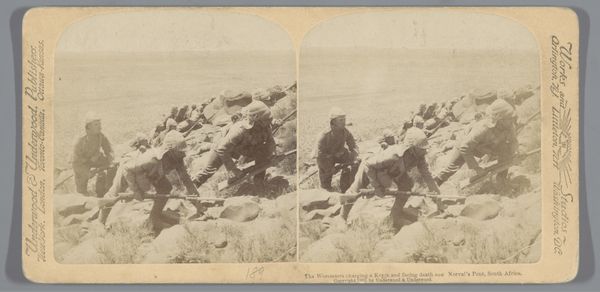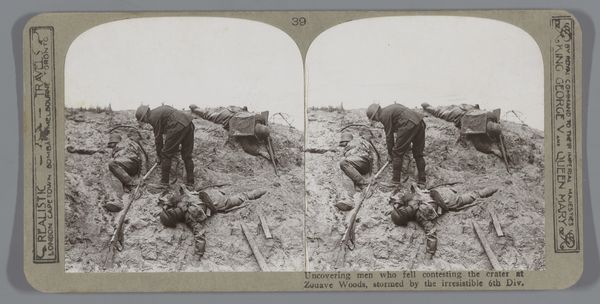
After the assault on Mouquet Farm, Thiepval Ridge, taken by our matchless infantry at heavy costs after 1914
0:00
0:00
photography, gelatin-silver-print
#
portrait
#
landscape
#
photography
#
gelatin-silver-print
#
genre-painting
#
history-painting
#
modernism
#
realism
#
monochrome
Dimensions: height 85 mm, width 170 mm
Copyright: Rijks Museum: Open Domain
Curator: This sobering image, captured after 1914, bears the long title, "After the assault on Mouquet Farm, Thiepval Ridge, taken by our matchless infantry at heavy costs." It’s rendered as a gelatin silver print, reflecting a stark realism. Editor: It's overwhelmingly bleak. The eye struggles to find a point of focus, instead landing on the lifeless forms scattered across a desolate landscape. There's a profound sense of abandonment here. Curator: Indeed. These stereo photographs, popular at the time, offered viewers an immersive experience of the war, attempting to bridge the gap between the home front and the horrific realities of the trenches. The photograph, itself, becomes a commodity consumed by citizens who would never get close to these events. Editor: Consumed, yes, but to what end? Is this supposed to inspire patriotic fervor, or to truly reckon with the cost of war? That glorifying description—"matchless infantry"— jars horribly against the visual evidence of utter defeat. It’s a classic example of propaganda obscuring trauma. Curator: It’s a tension that pervades much of the art and media produced during the war years. The desire to maintain morale clashed with the unavoidable exposure to unprecedented levels of carnage. Editor: And look at the composition; it lacks any heroic framing. The bodies are just… strewn. Their placement undermines the claim of "matchless" achievement, emphasizing the brutal disregard for individual life inherent in war. The very earth seems to have rejected them. Curator: The scale is deceptive, too. On the one hand, a stereoscopic print might provide the sense of presence to domestic consumers. On the other, the photograph has no referent; there's little indication of depth and a limited sense of scale. In that way, it almost reduces human tragedy into something small, contained, almost manageable. Editor: I see your point. By cropping out the broader context and producing many copies of the scene, they sanitize and objectify immense trauma. Curator: These mass-produced images became part of a complex process by which society grappled with the enormity of the war, simultaneously acknowledging and distancing itself from its consequences. Editor: This photograph serves as a grim reminder that what is often recorded is a sanitized view. And we need to analyze the images from that era through a lens that reveals the power dynamics. Curator: It gives one pause to reconsider how these images, once tools of national narrative, continue to shape our understanding of war and its human cost.
Comments
No comments
Be the first to comment and join the conversation on the ultimate creative platform.
